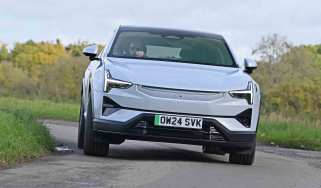Audi A6 - MPG, CO2 and running costs
All variants of the A6 are reasonably frugal, but the PHEV offers the most impressive numbers

High-mileage drivers often favour large executive cars like the Audi A6, so fuel economy and running costs will be of the utmost importance.
Fleet cars have traditionally been powered by diesel and, predictably, the 40 TDI engine is indeed one of the most economical in the range, with an official figure of 50.4 mpg on the WLTP combined cycle. Its CO2 emissions aren’t as low as they could be, though, at 147g/km. This means company car users, as well as those who want to reduce their carbon footprint, may be better suited to the plug-in hybrid model instead.
The A6 TFSI e has a claimed fuel economy figure of 235.4mpg. Of course, you’ll be hard-pressed to achieve this in everyday driving, but we easily managed a steady figure of 60mpg when testing this model in Avant estate form. This figure may be some way off the claimed number, but it’s still quite a bit higher than the diesel. There’s up to 42 miles of all-electric battery range, too, and the official CO2 emission rate is just 28g/km.
If you’re thinking of opting for petrol power instead, the entry-level TFSI 40 returns up to 38.7mpg on the WLTP combined cycle while emitting 165g/km of CO2. The larger 45 TFSI unit claims 37.2mpg, and its official emissions are 173g/km.
Used - available now
One thing helping the fully-combustion-powered A6s in terms of efficiency is the mild-hybrid system. This comprises a belt alternator starter (BAS) motor powered by a small lithium-ion battery. The system provides a short power boost to assist the engine when accelerating, helping it to work less, and save a little fuel in the process.
On the performance-orientated side of things, the S6 is your best bet if you wish to retain a modicum of affordability at the pumps. In saloon form, the S6’s diesel engine returns a claimed average of 39.8mpg – not bad considering the car’s power, size and weight – while emitting 185g/km of CO2.
Insurance
The 40 TFSI in entry-level Sport trim will be the cheapest A6 to insure, as this sits in group 33E. The rest of the petrol and diesel-powered models range from group 34E to 38E. Meanwhile the plug-in hybrid TFSI e jumps up into groups 42E to 45E. The letter ‘E’ means the Audi has exceeded the minimum security standard for its insurance group.
The A6’s rivals, meanwhile, aren’t too dissimilar when it comes to insurance premiums. The Mercedes E-Class ranges from group 41E all the way to 50E, while the BMW 5 Series starts in group 35E and tops out in 44E — excluding the M5 performance model.
Depreciation
The Audi A6 has two factors that pull it in opposite directions: on the one hand, large executive saloons tend to lose value relatively savagely; yet on the other, Audis have a strong reputation for residual values. According to our expert data, the A6’s retained value after three years and 36,000-miles varies quite considerably depending on the chosen trim and powertrain. This can range from 30-47 per cent.
The worst depreciator is also one of the most expensive to buy; the S6. If you’re set on owning this version, the best performer is the Black Edition model — without the Technology Pro Pack added — because this should retain 33 per cent after three years.
If you’re buying a standard A6, the general rule is that the Avant estates retain more value than the saloons. If you opt for the saloon, though, the best choice is the 40 TDI in Black Edition trim, as this will retain 41 per cent over the same period.













